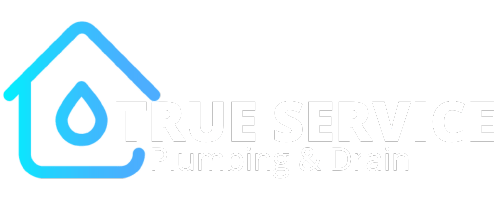How long does it take for pipes to freeze? This is a common concern for homeowners, especially during harsh winter months.
Frozen pipes can lead to costly damage, water leaks, and even burst pipes, resulting in expensive repairs.
Understanding how quickly pipes freeze, what factors contribute to freezing, and how to prevent it can save you from major plumbing disasters.
In this guide, we’ll cover everything homeowners need to know about frozen pipes, including warning signs, prevention strategies, and what to do if your pipes are already frozen.
What Temperature Do Pipes Start to Freeze?
Pipes start freezing at 32°F (0°C), but the risk of pipe bursts increases when temperatures drop to 20°F (-6°C) or lower.
Factors That Accelerate Freezing
- Wind Chill: Cold winds can cool down pipes faster, increasing the likelihood of freezing.
- Sudden Temperature Drops: A drastic overnight drop in temperature can freeze pipes before homeowners have time to react.
- Lack of Insulation: Exposed or uninsulated pipes in basements, garages, and attics freeze faster.
How Long Does It Take for Pipes to Freeze?
Pipes can freeze in as little as 2 to 6 hours in extremely cold conditions.
However, several factors influence the freezing timeframe:
Factors Affecting Freezing Time
- Outdoor Temperature: The colder it is, the faster pipes freeze. At 20°F (-6°C) or lower, freezing can occur within a few hours.
- Pipe Material: Metal pipes (such as copper) conduct heat faster and are more prone to freezing than PVC pipes.
- Insulation Quality: Well-insulated pipes take longer to freeze, while uninsulated pipes are vulnerable to rapid freezing.
- Water Flow: Stagnant water in pipes freezes faster than moving water, making unused pipes more at risk.
- Pipe Location: Pipes running along exterior walls, in unheated basements, and crawl spaces freeze more quickly.
Where Are Pipes Most Likely to Freeze?
Certain areas in your home are at higher risk for frozen pipes.
These include:
- Basements & Crawl Spaces: Poor insulation and exposure to outside temperatures increase freezing risk.
- Exterior Walls: Pipes along outer walls are susceptible to extreme cold.
- Attics & Garages: Unheated spaces with little to no insulation cause pipes to freeze quickly.
- Outdoor Faucets & Hose Bibs: Direct exposure to winter temperatures makes them freeze first.
Warning Signs That Your Pipes May Be Freezing
Early detection can prevent extensive damage.
Watch for these signs:
- Reduced Water Flow: If your faucets have low pressure or no water at all, the pipes may be frozen.
- Frost on Pipes: Visible ice or frost on exposed pipes is a clear warning.
- Unusual Noises: Whistling, banging, or cracking sounds may indicate expanding ice inside the pipe.
- Foul Smells: If drains or faucets emit strange odors, frozen pipes may be blocking airflow.
How to Prevent Pipes from Freezing
Taking preventive measures can save you from expensive repairs.
Here’s how you can protect your pipes:
1. Keep the Heat On
Maintain indoor temperatures above 55°F (13°C), even if you’re away.
2. Let Faucets Drip
Running a small trickle of water keeps pipes from freezing.
3. Insulate Pipes
Use foam pipe insulation, heating cables, or wraps for exposed pipes.
4. Seal Cracks and Openings
Seal gaps in walls, doors, and windows to keep cold air from reaching pipes.
5. Open Cabinet Doors
Allow warm air to circulate around pipes under sinks and vanities.
6. Disconnect Outdoor Hoses
Shut off outdoor faucets and drain hoses to prevent freezing.
What to Do If Your Pipes Are Frozen?
If you suspect frozen pipes, act fast to prevent bursting:
1. Turn Off the Water Supply
Locate your main shut-off valve and turn it off to prevent water damage.
2. Apply Heat to the Frozen Area
Use a hairdryer, heating pad, or warm towels to slowly thaw pipes. Never use an open flame.
3. Keep Faucets Open
As pipes thaw, running water helps clear ice blockages.
4. Call a Plumber if Necessary
If pipes remain frozen or show signs of damage, contact a professional plumber.
How Much Damage Can Frozen Pipes Cause?
A frozen pipe isn’t just an inconvenience—it can lead to serious damage:
- Burst Pipes: Expanding ice can crack pipes, causing flooding.
- Water Damage: Leaks can ruin walls, floors, and furniture.
- Mold Growth: Excess moisture creates the perfect environment for mold.
Repair costs vary, but fixing water damage from burst pipes can cost thousands of dollars. Preventing frozen pipes is always the best approach.
Conclusion
Pipes can freeze in as little as 2 to 6 hours under extreme conditions.
Homeowners should take proactive measures such as insulating pipes, keeping the heat on, and allowing faucets to drip.
If you suspect frozen pipes, act fast to prevent them from bursting and causing severe damage.
Plumbing Services for Frozen Pipes With True Service Plumbing
Frozen pipes can cause serious damage, but True Service Plumbing is here to help.
Serving Toronto and the GTA, we provide expert solutions for frozen and burst pipes in both residential and commercial properties.
Don’t let winter plumbing issues ruin your home. Contact True Service Plumbing today for fast, reliable service and peace of mind during the colder months.


